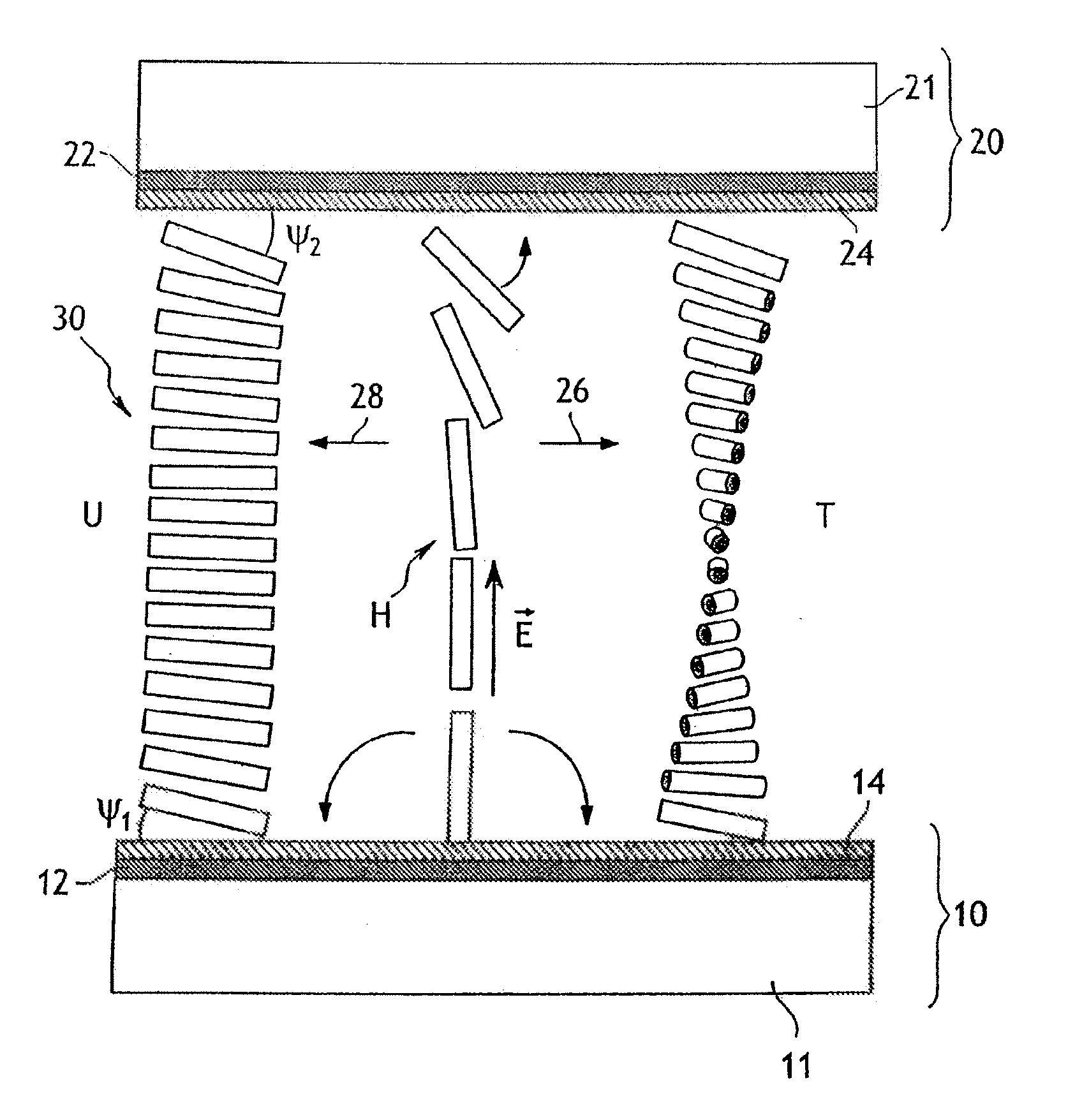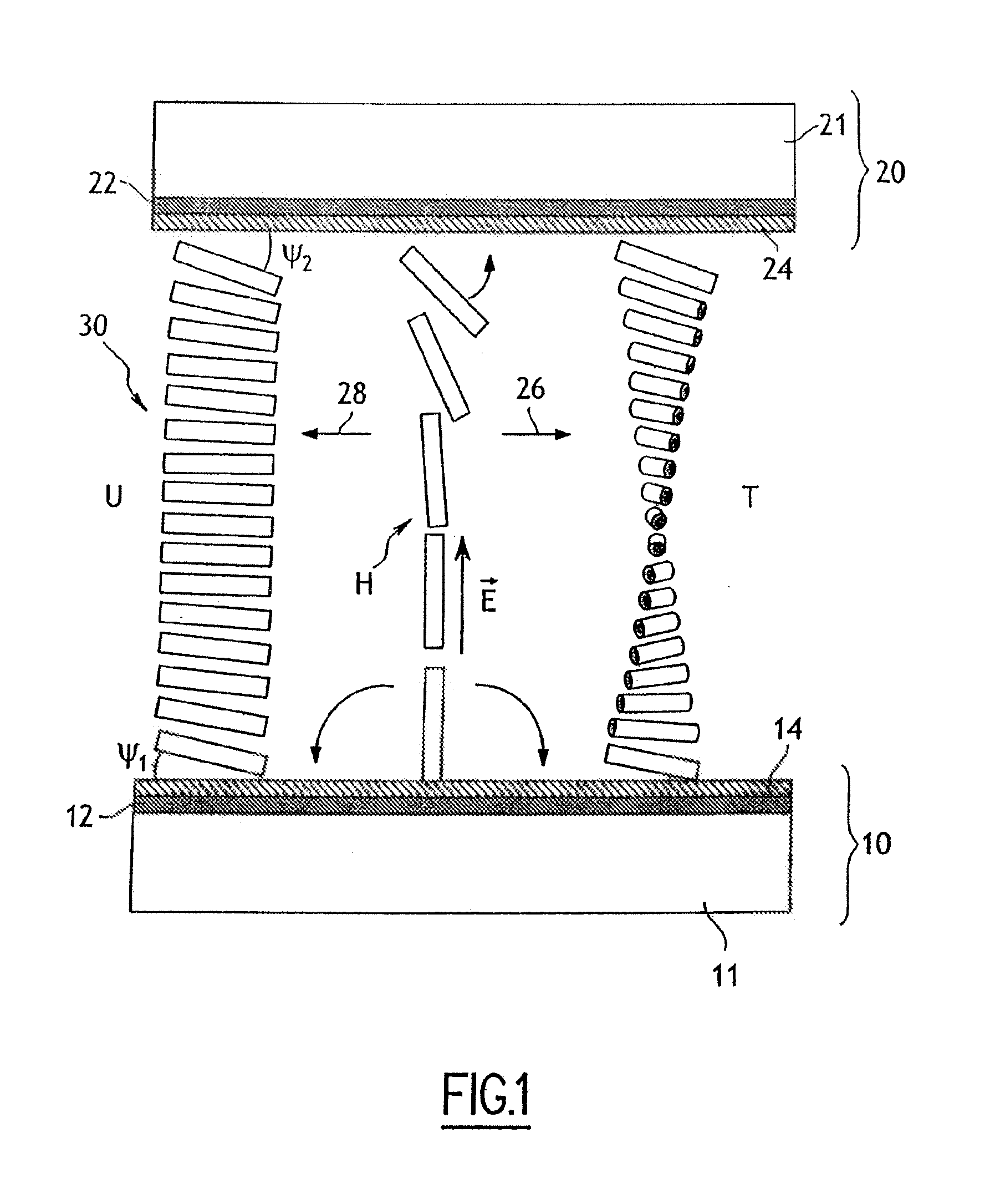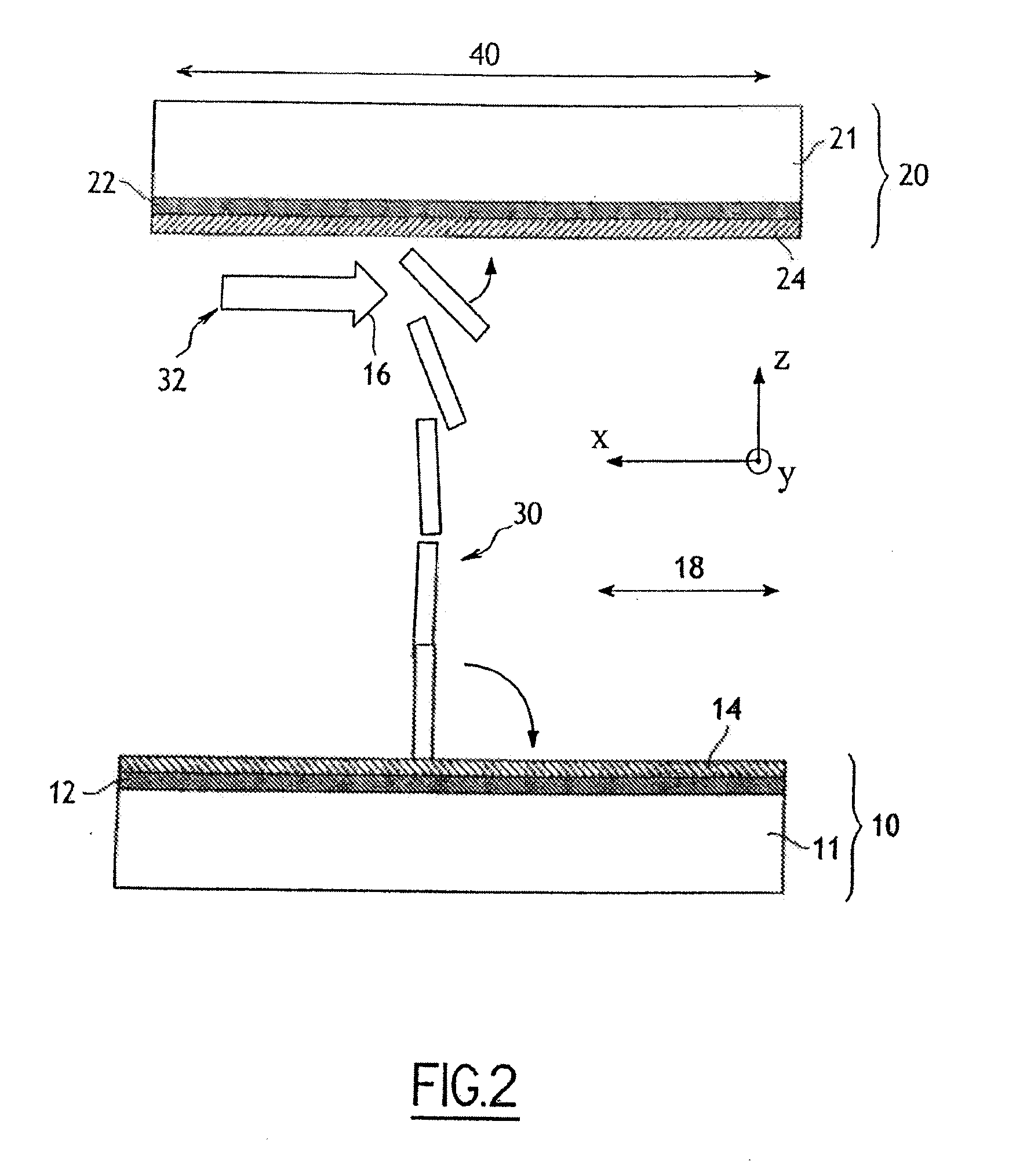Liquid crystal display device with improved switching means
- Summary
- Abstract
- Description
- Claims
- Application Information
AI Technical Summary
Benefits of technology
Problems solved by technology
Method used
Image
Examples
example 1 of embodiment
of the Invention
In Passive Addressing Acceleration of the Second Step of Addressing in Two Steps and Control of the Levels of Grey
[0084]Either a screen or a few lines of a passive multiplex matrix screen, addressed in two steps. The lines 52 are perpendicular to the brushing, thus perpendicular to the flows induced by movement of the molecules (orthogonal brushing). In reference to the second step of the display: the screen has been placed in texture T by the first step in the zone 100 to be switched. Switching is done on the line n. Switching of the pixel P (line n, column m) is studied.
[0085]At the start of the resulting switching, here by way of example of a voltage slot applied to a line n, lifting the molecules from the line n causes displacement of the liquid crystal by more than 100 nm. In the configuration of molecules illustrated in FIGS. 2 and 7, displacement is towards the positive x. This displacement creates near the line n−1 overpressure and near the line n+1 negative ...
example 2 of embodiment
of the Invention
Controlling Switching to U or T of the Pixels of the Line Activated During Line-by-Line Addressing (in One Step) in Passive Addressing
[0092]To undertake line-by-line addressing, according to the invention auxiliary signals applied to the adjacent pixels are used, and adjusted to consider their state (U, T or coexistence of both textures). A constraint is that the adjacent pixels located on the lines already recorded (n−1, n−2 . . . ) must not change state, and the auxiliary signal applied to these adjacent pixels must thus low in amplitude, that is, at least less than the breakage voltage. On the contrary, an auxiliary signal of strong amplitude can be applied to the lines along the line n to be recorded (lines not yet recorded with the new image, n+1, n+2 . . . ).
[0093]It is accordingly possible with an auxiliary signal line to lift then relax the molecules corresponding to the preceding lines and following the line n to be recorded, and use their rise and fall flow...
example 3 of embodiment
of the Invention
Rapid Addressing in Two Steps Using a Pixel Signal which does not break the anchorage for changing to T of Pixels that should Remain in T
[0094]In using the auxiliary flows of the adjacent pixels, the inventors have brought to light another variant of a rapid display process in black and white which saves on power.
[0095]This is a method in two steps. During the first step, the part of the screen to be displayed is put uniformly in T.
[0096]During the second step the display is composed line after line and the line activation signals can be simple slots. The amplitude V1 of the line activation signal VL is slightly less than the breakage value Vcass of the anchorage on the slave surface 10. The chronogram of these signals is shown in FIG. 16:
[0097]To change the pixel P(n, m) to U, the breakage is produced by a negative slot column signal illustrated in FIG. 16d: Vp=VL−Vc>Vcass. In this variant, it is not necessary for the falling edge of the column signal to be synchron...
PUM
 Login to View More
Login to View More Abstract
Description
Claims
Application Information
 Login to View More
Login to View More - R&D
- Intellectual Property
- Life Sciences
- Materials
- Tech Scout
- Unparalleled Data Quality
- Higher Quality Content
- 60% Fewer Hallucinations
Browse by: Latest US Patents, China's latest patents, Technical Efficacy Thesaurus, Application Domain, Technology Topic, Popular Technical Reports.
© 2025 PatSnap. All rights reserved.Legal|Privacy policy|Modern Slavery Act Transparency Statement|Sitemap|About US| Contact US: help@patsnap.com



